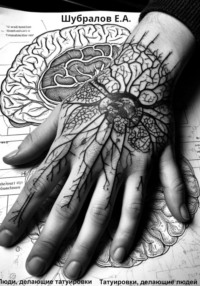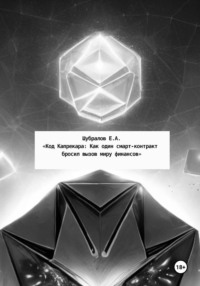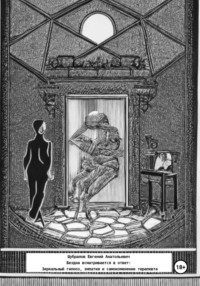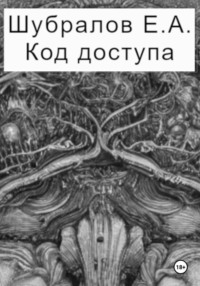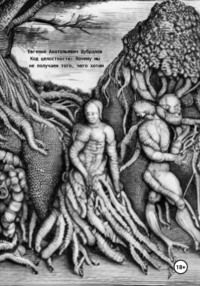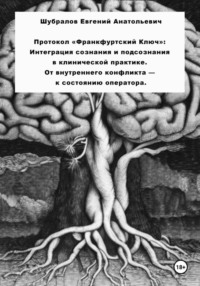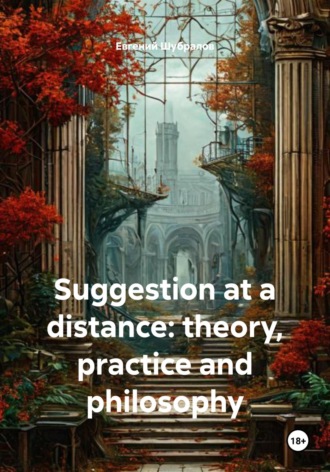
Полная версия
Suggestion at a distance: theory, practice and philosophy
To clarify this fact with an example, I will remind you here what a magical effect on everyone is produced, for example, by the appearance of one cheerful gentleman in a bored society. Everyone immediately involuntarily, without noticing it themselves, becomes infected with his fun, cheers up their spirits, and society turns from boring, monotonous into very cheerful and lively.
In turn, the revival of society has an infectious effect on the person who brought this revival, which makes his spiritual tone even more uplifting.
Here is one of the many examples of the effect of involuntary suggestion or the natural inoculation of mental states from one person to another.
Since in this case we are talking about the mutual mental influence of one person on others and vice versa, it is most correct to call this condition involuntary mutual suggestion.
At the same time, it should be borne in mind that the effect of involuntary suggestion and mutual suggestion is much broader than one might think from the very beginning.
It is not limited only to certain more or less exceptional persons, like intentional suggestion produced in the waking state, and also does not require any special unusual conditions for itself, like suggestion produced in hypnosis, but acts on everyone and everyone under all possible conditions.
It goes without saying that with regard to the involuntary inoculation of mental states, there are great differences between individuals in the sense that some, as more impressionable, more passive and therefore more trusting natures, are more easily amenable to involuntary mental suggestion, while others are less; but the difference between individuals exists only quantitative, not qualitative, in other words, it consists only in the degree of susceptibility to unintentional or involuntary suggestion from others, but no more.
Involuntary suggestion and mutual suggestion, thus, as we understand it, is a more or less universal phenomenon.
However, the question arises, in what way can the ideas and mental states of others be instilled in us and subordinate us to their influence? There is every reason to think that this inoculation takes place exclusively through the senses.
The question of mental influence at a distance from one person to another has been repeatedly raised in science, but all attempts to prove this method of transmitting thoughts at a distance more or less irrevocably collapse as soon as it is subjected to experimental verification, and at present no strictly verified fact can be given that I would speak in favor of the real existence of telepathic transmission of mental states.
Therefore, without denying in principle the further development of the above-mentioned question, we must admit that the supposed similar transmission of thoughts by some in the present state of our knowledge is completely unproven.
Thus, discarding any assumption about the possibility of telepathic transmission of ideas at a distance, we are forced to dwell on the idea that the inoculation of mental states from one person to another can be transmitted in the same ways as the influence of one person on another is transmitted in general, that is, through the senses.
There can hardly be any doubt that the main transmitter of suggestion from one person to another is the organ of hearing, since verbal suggestion is, generally speaking, the most widespread and, apparently, the most valid.
But there is no doubt that other organs, especially vision, can also serve as intermediaries in the transmission of suggestion. Not to mention the influence of facial expressions and gestures, I will only point out the fact that very few people can see a yawn so as not to yawn themselves; similarly, the sight of a lemon being eaten involuntarily causes lips to clench and excessive salivation.
There is a well-known anecdote that an entire orchestra was stopped this way by one spectator, who engaged in eating a lemon in front of the musicians.
All these are examples of visual suggestion, which, as it is easy to see, works in certain cases no less correctly than auditory suggestion.
Examples can also be given of the transmission of suggestion through the tactile and muscular senses. Everyone knows that mutual handshaking is often a very effective means of conveying emotional feelings and sympathy between close people.
Further, there is an example that one medical student experienced great fear at the thought that he had cut off his finger with a scalpel, whereas in fact only the blunt back of the scalpel slipped over his finger.
Another example of suggestion by means of a tactile organ is the well-known story about a criminal sentenced to death, who, with his eyes closed, was told that one of the veins had been opened and that his blood was constantly flowing.
After a few minutes, he turned out to be dead, despite the fact that instead of blood, warm water was flowing through his body.
As for suggestion by means of a muscular sense, it has been studied repeatedly on hysterics in Salle-Petriere, and it turned out that in certain cases suggestion can be performed very successfully in this way. It is enough for a hysterical patient in hypnosis to fold her hands, as they fold when praying, and immediately her face assumes an expression of supplication. If in another case you fold her right hand into a fist, then her face takes on an expression of threat.
It is obvious, therefore, that the muscular sense, generally very little adapted for the communication of individuals, makes it possible to transmit suggestions.
In general, it must be recognized that various sense organs can serve as transmitters of suggestion, not excluding touch and muscle sense, but it goes without saying that organs such as hearing and vision, as the devices most adapted for communicating people with each other, are the most important organs through which suggestions are most often and most accurately transmitted.
In fact, involuntary suggestion and mutual suggestion, being a universal phenomenon, operates everywhere and everywhere in our daily lives. Without noticing it ourselves, we acquire to a certain extent feelings, superstitions, prejudices, inclinations, thoughts and even character traits from those around us, whom we most often treat. Such inoculation of mental states occurs mutually between persons living together, in other words, each person in one way or another inoculates another feature of his mental nature and, conversely, accepts certain mental traits from it. Consequently, in the full sense of the word, there is a mental interchange between people living together, which responds not only to feelings, thoughts and actions, but even to the physical sphere, since the influence of mental activity can generally be reflected on it.
This influence especially affects facial expressions, which give a certain expression to the face and outline its features to a certain extent. This fact, among other things, explains to us the fact that, as has long been noted, there is in a significant number of cases a great similarity in the features of husband and wife, which obviously depends most of all on mental assimilation by mutual suggestion of both persons who are in cohabitation. In happy marriages, this similarity of facial features is apparently even more common than in the mass of all marriages in general.
But there is nothing more convincing in the sense of direct transmission of mental states from one person to another, as the transmission of pathological phenomena.
Everyone knows that a tantrum that has occurred in society can lead to a number of other tantrums; on the other hand, stuttering and other convulsive forms are easily transmitted to predisposed subjects quite directly, through involuntary and imperceptible inoculation or suggestion.
An excellent example of this is the following case, which occurred during the American mental epidemics known as the renaissance: "A gentleman and lady, well known in fashionable society, were attracted to a field meeting in Cave Ridge. On the way there, they made many contemptuous remarks about the poor, headless creatures lying screaming in the mud and jokingly promised to help each other if any of them got convulsions. They did not look long at the strange scene in front of them as the young woman lost consciousness and fell to the ground. Her companion, forgetting his promise, immediately left her and ran with all his might. But running didn't save him. Before he had gone 200 yards, he also fell in convulsions."
We have no less instructive cases in mass suicides and in the so-called cases of induced or, more precisely, vaccinated insanity (folie a deux). In both cases, we are talking about the effect of suggestion, thanks to which the infection of suicides occurs, on the one hand, and, on the other, the transmission of painful mental states from one person to another. There are examples when cases of vaccinated insanity, studied in detail by Lassegue'om and Falret, Legrand du Saulle'om, Schman'om, Regis, Marandon'om, Promier'om, Yakovenko, Agadranyants (from our clinic) and many others. others, were sometimes observed even in an entire family consisting of 4.5 and even 6 and 8 persons. These cases thus represent a real mental family epidemic.
Even healthy individuals sometimes assimilate the delusions of patients (Solder, Moreau, Morel, Baillarger, etc.).
It is also known that the best way to eliminate such a borrowed brand is to immediately disconnect the persons influencing each other.
MASS ILLUSIONS AND HALLUCINATIONS
In the above examples, there is no doubt about such pathological cases, which are particularly susceptible to mental influences from others. However, there is no doubt that in some cases the transmission of mental infection appears to be extremely facilitated even among perfectly healthy individuals.
Especially favorable conditions for such transmission are the ideas of the same kind prevailing in the minds of many people and the affects and moods of the same nature. Due to these conditions, illusions and hallucinations of an identical nature develop in many people at the same time.
These collective or mass hallucinations, which occur under certain conditions, represent one of the most interesting psychological phenomena. In almost every family chronicle, you can hear stories about the vision of deceased relatives by a whole group of people.
There is a well-known story about a cook on a ship who died unexpectedly, which amazed all the passengers of the ship. The usual naval funeral was performed in such cases, that is, the corpse was lowered into the sea, and in the evening of the same day many of the passengers saw the deceased cook walking behind the ship and hobbling on one leg. Needless to say, everyone was thrown into indescribable fear and that many passengers spent an anxious night.
The next morning, the matter was clarified. Instead of the cook, there was a stump of wood tied to the stern of the ship.
It is said that in the old days, when ships moved under sail and when they were caught in a calm under the tropics and had to stay in boundless space for a long time during the terrible heat, passengers sometimes developed mass illusions and hallucinations, while they often seemed to be near the earth with extremely beautiful views and picturesque outlines of the shores.
One of the interesting examples of mass illusions and hallucinations is, among other things, the case that happened to French military vessels in 1846. The frigate Belle-Poule and the corvette Berceau were caught in a terrible hurricane near the islands of the Compound. The first of them survived the hurricane safely, but lost sight of the corvette "Berceau" and, considering it useless to search for it in the open ocean, headed for a pre-arranged rendezvous point off the eastern coast of Madagascar, to the island of St. Mary. There was no corvette here, and all searches near the island were fruitless. Naturally, this was followed by a painful waiting period for the Belle-Poule crew. Every day brought more and more concern for the fate of the unfortunate corvette, whose crew consisted of 300 people. A whole month has passed in such agonizing expectation. Finally, one hot sunny afternoon, a signaller sitting on a mast noticed a ship without masts in the west near the shore. The entire crew fixed their eyes on the indicated point and made sure that the signaller's message was fair.
It goes without saying that this event excited everyone, and the excitement reached an even greater degree when everyone saw before them not a wrecked ship, but a raft filled with people and towed by sea boats, from which signals of death were given. This vision lasted for several hours, and with each passing minute, more and more horrifying details of this scene became clear. On the order of the commander, the Archimede cruiser standing in the raid was immediately sent to help the dead. The day was already coming to an end and the southern night was beginning to descend when the Archimede approached its destination. It should be noted that all this time the crew of the cruiser Archimede saw people dying on the raft; there were even cries for help, drowned out by the splash of oars. This amazing illusion was dispelled only when the boats launched from the cruiser approached an object that was mistaken for a raft with people and turned out to be a mass of huge trees torn from the shore, brought here by the current. At the same time, the hope of seeing the passengers of the wrecked ship "Berceau" was finally lost, and their very fate was covered with a thick darkness of uncertainty.
Needless to say, the influence of suggestion is evident in the development of this mass hallucination, so to speak. Undoubtedly, the disasters experienced at sea greatly aroused the nerves of the passengers of the cruiser Belle-Poule and Archimede, and anxiety and fear for the fate of the 300 companions who were on the Berceau contributed a lot to a well-known trend of minds. Naturally, everyone's thoughts focused on the assumption of the possible death of their unfortunate companions. All the conversations boiled down to the same topic. At such and such a time, the signaller notices a strange object with vague outlines on the horizon towards sunset, and under the influence of the thought of the wreck of the corvette, the image of the latter is recreated from his eyes. His mere words that a wrecked ship could be seen in the distance were enough to inspire everyone with the same illusion. Next comes the development of the same inspired illusion. When exchanging thoughts about a visible object, everyone agrees that it is not a wrecked ship, but a raft filled with people and towed by boats from which distress signals are heard. This general illusion and hallucination lasts until the boats sent crashed into the dense foliage of floating trees.
There is no doubt that similar phenomena are possible in other cases and, perhaps, even occur more often than is usually accepted. Many of us probably still remember that when aggravated the relations with Germany had begun, a strange flights to Russia Prussian balloons. Whole masses of faces testified to the simultaneous vision of these balloons by many people, despite the fact that modern aeronautics did not give reason to believe in the reality of these flights. In view of this, it was not without reason that the idea was expressed that these flights of Prussian balloons belonged to the field of mass hallucinations caused by the direction of minds towards possible hostile actions against us from Germany.
Has the same story happened with Andre's balloon, which flew to the north pole? How many telegrams were received at one time from different parts of the northern hemisphere about the vision of the Andre ball by a whole mass of people. Was there not also a case of mass illusion or hallucination, just as it was, apparently, with the Prussian balloons? Such an explanation at least suggests itself when you read the smallest details about the vision of the Andre ball by several persons of one or another area.
No less well-known are historical examples of collective hallucinations. Among such hallucinations are, among other things, the vision of the heavenly army by one detachment of Russian troops before the Battle of Kulikovo, the vision of the crusaders clad in armor and descending from heaven by the heavenly army led by St. George, Demetrius and Theodore, the vision of the bright knight on the Mount of Olives waving a cross during the storming of Jerusalem, the famous vision of the cross in heaven with the inscription "you will win with this", experienced by Constantine the Great and his retinue before the start of a decisive battle and many others.
Mass religious visions have happened repeatedly and in later times. So, during a severe cholera epidemic in 1885, residents of the village of Corano near Naples began to see the Madonna in a black robe praying for the salvation of people on the nearest hill where the chapel stood. Word of this incident spread quickly through the surrounding area, and people began to flock to Corano. The vision continued until the Government took decisive measures against the further spread of this epidemic hallucination. The chapel was moved to another place, the hill was occupied by a detachment of Carabinieri, after which the vision stopped (Verga). There is also a known hallucinatory epidemic that developed among the peasants of the Rhine province during the Franco-Prussian War and was expressed by mass visions of religious and military content, such as visions on roof skates, on glass and other objects of images of the Madonna, crucifixion, zouaves, cannons, etc
. According to the doctor of our clinic, Dr. M. I. Nikitin, during recent religious celebrations, a massive hallucination occurred in front of his eyes.
In one well, many of the worshippers began to see the object of their worship as it was usually depicted on icons; some even saw that the face made a movement with his hand. Such a vision, experienced by a large number of worshippers at the same time, lasted for several minutes, until one praying mantis who had just approached the well, who was not aware of the object of the vision in the well, when asked if she saw anything in the depths of the latter, replied decisively that she saw nothing but stones lying at the bottom the well. From that moment on, the mass hallucination quickly dissipated.
Such visions are explicable only from the point of view of mutual suggestion, completely involuntary on the part of some persons on others.
When one or another mood prevails in a population or in a group of people, and when thought works in a certain direction, then one or another person, especially with mental imbalance, easily develops deceptions of feelings that correspond in content to the mood and direction of his thought, which are immediately communicated to other persons by involuntary suggestion, verbal or otherwise being in the same mental conditions.
If those who knew the Andijan circumstances completely did not see the situation in a rosy light, imagine those to whom all this reached in forms inflated to chimerical, and you can easily imagine the state of the dark soldier's environment.
The orderlies were especially zealous suppliers of various absurdities in the soldier's environment.
The night when the alarm occurred in Andijan was dark-a dark southern night, cloudy. It was preceded by rain, it seems, with a thunderstorm.
The newly arrived riflemen were stationed in barracks and camps. The barracks were still poorly lit inside, and the barracks were almost the same as on the fateful night of May 18, that is, very sparsely. The rest of the city and the surrounding area were drowned in the thickest darkness. Lanterns in the city of Andijan were not lit that night, according to the glorious Russian custom of not lighting them if the moon is supposed to be on schedule, even if it was hidden by clouds (sic!).
It was after midnight. Soldiers both in barracks and in camps slept side by side, holding their guns tightly and feeling for cartridges. The silence was truly depressing and oppressive.
Suddenly, from somewhere in the distance, some vague noise came, which made all of us shudder, and a second later be horrified, and then gasp, because the noise grew and grew… now it's the hubbub of the crowd, now individual wild screams break out, then whole sheaves of screams, screams, screams.
Then a "hurrah" joined all this, at first rare, then loud, then thunderous… The victorious "hurrah"… "Hurrah" grew, covering the camp, the barracks.
Suddenly, gunfire crackled. The witness came to the camp when another day guard, having applied himself, fired the last charge after the fleeing enemy. At that moment, all the other people were standing, already lined up in their barracks-canopies, carefully looked around and reassured by their superiors. Everyone openly told where he had fired and how many times, but where the shooting and alarm came from, no one really knew either in the camps or at the posts.
Meanwhile, the reason for the false alarm was that the wounded man jumped up in delirium and started running screaming: after that, all the other wounded also jumped up.
The hunting team closest to the infirmary, instantly awakened, grabbed their guns and, shouting "hurrah!" rushed to the rescue of their wounded.
This has stirred up the camp! People started jumping up, putting on whatever they could, shouting and shouting. A "hurrah" was shouted, which, growing and rolling, reached the remotest corners of the garrison.
Then someone fired a rifle into the darkness, and the mass hallucination grew in all its glory – everyone saw, heard and shot the enemy. People became deaf for seconds to the voice of their superiors, to the signals.
Fortunately, there were no casualties, except for a few bruises and scratches.
STEREOTYPICAL DECEPTIONS OF FEELINGS AND SELF-SUGGESTION
From the same point of view, it is necessary to explain the stereotypical deceptions of feelings, peculiar only to well-known families, in which these hallucinations are given one or another, mostly fatal significance.
It is known that in the Habsburg House, for example, such a hallucination, which is given the fatal significance of a harbinger of death, is a vision of a black woman. The appearance of this woman has long been considered a faithful messenger of the approach of someone's demise and is transmitted by word of mouth in the form of a family, or generic, inspired idea, which is personified in appropriate cases in the form of a stereotypical hallucination.
Occasionally, in one or another family, you can meet with other kinds of inspired ideas, which also play an important role in the lives of members of this family. I had information, for example, about one family in which fear of fire was transmitted from generation to generation because of the possibility of dying from it, and, indeed, many of the family members died from careless handling of fire or even from suicide by self-immolation. In another family, the idea was held that the death of its members occurred from firearms, whether by suicide or by one or another accident, and it turned out that even the last descendants of this family, despite the terrible fear they showed of firearms, died from shots from a rifle or revolver, either completely accidentally or intentionally in the form of suicides.
It should be borne in mind that in such cases, autosuggestion often helps suggestion, by which we mean the inoculation of mental states caused not by extraneous influences, but by internal causes, the source of which is in the personality of the patient himself, who is undergoing autosuggestion.
Everyone knows that a person can set himself up in a sad or cheerful mood, that he can, in certain cases, develop his imagination to the appearance of illusions and hallucinations, that he can even instill this or that belief in himself. This is autosuggestion, which, like suggestion and mutual suggestion, does not need logic, but, on the contrary, often acts even contrary to all logic.
Who knows that it is enough to give free rein to your imagination and it is ready to draw all sorts of scary images in the dark of night, despite the fact that we can be firmly convinced that nothing terrible really exists.
But this is only one of the weak examples of the action of autosuggestion, which in certain cases can lead to real deceptions of the senses.


